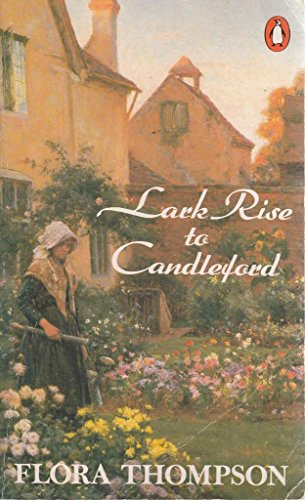
The Lion, the Witch, and the Wardrobe may be the most familiar of the seven Chronicles of Narnia by C.S. Lewis, but it is not necessarily the most thrilling. That honor belongs to The Silver Chair, the sixth book in chronological order, a tale of daring rescue, escape from man-eating giants, and being in over one’s head to fulfill a call.
In this Narnia adventure, the four Pevensies (Peter, Susan, Edmund and Lucy) have not been drawn by Aslan in His world; instead their unappealing cousin, Eustace Scrubb, enters the magical land with his classmate, Jill Pole. As you may know, Eustace in The Voyage of the Dawn Treader made a complete change and has become a new person. This has become evident to his school acquaintance, Jill, and is expressed by Eustace himself in the following humble and humorous fashion: “Then wash out last term if you can,” said Eustace. “I was different then, I was –gosh! What a little tick I was.”
This pair of unlikely heroes is joined by a new creature -one from C.S. Lewis’ fertile imagination, a Marsh-wiggle named Puddleglum from Ettinsmore who is all gangly limbs and pessimistic predictions.
 The trio’s impossible mission is to locate the missing Prince, heir to the throne of Narnia and son of the aged King Caspian. But Rilian disappeared without a trace over ten years earlier and their quest is fraught with mystery and both subtle and horrifying dangers.
The trio’s impossible mission is to locate the missing Prince, heir to the throne of Narnia and son of the aged King Caspian. But Rilian disappeared without a trace over ten years earlier and their quest is fraught with mystery and both subtle and horrifying dangers.
Jill Pole as a newcomer to Narnia has no experience with Aslan, the Lion who rules this world. He is not a tame lion and she knows this instinctively in her first face to face encounter with Aslan. His prone and majestic form lies between her and the stream she so desperately needs to drink from:
“If you are thirsty, you may drink.” …and the voice was not like a man’s. It was deeper, wilder and stronger; a sort of heavy, golden voice. It did not make her any less frightened than she had been before, but it made her frightened in rather a different way.”
“I daren’t come and drink,” said Jill.
“Then you will die of thirst,” said the Lion.
“Oh dear!” said Jill, coming another step nearer; “ I suppose I must go and look for another stream then.”
“There is no other stream,” said the Lion.
Once she approaches and drinks, Aslan gives her the instructions for the quest: “I lay on you this command, that you seek this lost prince until either you have found him and brought him to his father’s house else died in the attempt, or else gone back to your own world.”
Jill is given the responsibility to remember four signs to guide the rescuers in their quest. Aslan gives Jill a stern command: “Repeat the signs to remember them. Say them to yourself when you wake in the morning and when you lie down at night, and when you wake in the middle of the night. And whatever strange things may happen to you, let nothing turn your mind from following the signs.”

As you might imagine, Jill does not have the maturity or faith to fulfill her duty and what happens next is a series of misadventures that ultimately lead them into great peril. Join Puddleglum, Eustace, and Jill as they encounter giants from the House of Harfang, the sinister Lady of the Green Kirtle, a mysterious knight in black armor, and gnomes from the Land of Bism.
I recommend the trade paperback edition (256 pages) published in 2000 by Harper Collins with its beautiful full color illustrations by Pauline Baynes.
The Narnia Chronicles in chronological order: The Magician’s Nephew, The Lion, the Witch and the Wardrobe, The Horse and His Boy, Prince Caspian, The Voyage of the Dawn Treader, The Silver Chair, and The Last Battle.
The Silver Chair was originally published in 1953 and is 4th in publication order. The website http://www.narnia.com features an interview of C.S. Lewis’ step-son Douglas Gresham who gives an update about the movie version of The Silver Chair.

 Twentieth-century author Madeleine L’Engle, best known for A Wrinkle in Time, a young adult novel that won the Newbery Award in 1963, wrote sixty novels during her lifetime (1918-2007). If you haven’t read A Wrinkle in Time ever or recently, I highly recommend it whether you are young, middle-aged or older: “It was a dark and stormy night. In her attic bedroom, Margaret Murry, wrapped in an old patchwork quilt, sat on the foot of her bed and watched the trees tossing in the frenzied lashing of the wind.”
Twentieth-century author Madeleine L’Engle, best known for A Wrinkle in Time, a young adult novel that won the Newbery Award in 1963, wrote sixty novels during her lifetime (1918-2007). If you haven’t read A Wrinkle in Time ever or recently, I highly recommend it whether you are young, middle-aged or older: “It was a dark and stormy night. In her attic bedroom, Margaret Murry, wrapped in an old patchwork quilt, sat on the foot of her bed and watched the trees tossing in the frenzied lashing of the wind.”














